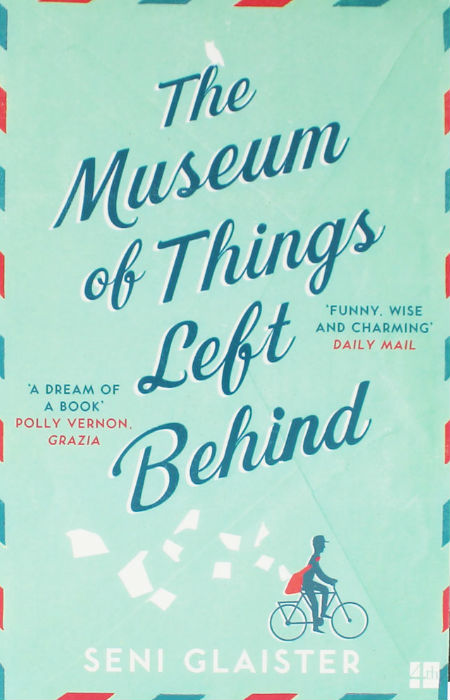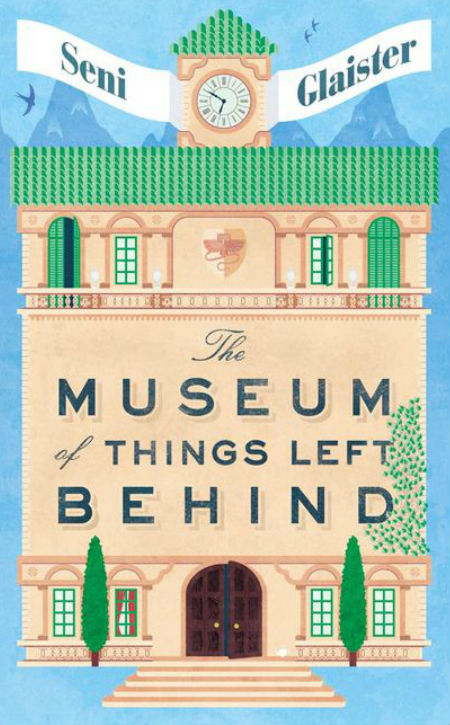
It’s a rare thing indeed to reference another review in your own but in this case it’s pertinent because the charmingly appreciative words of Laline Paull, author of The Bees, are what convinced me, along with a whimsically bittersweet title, to buy Seni Glaister’s remarkably lovely first novel with bite, The Museum of Things Left Behind:
“Took me on holiday to the tiny imaginary country of Vallerosa, and returned me with with the wonderful feeling of having spent time with an uplifting time.”
It’s true that you could say that of many books; each, in their way, feels like a friend of sorts when you’re with them, rich with intriguing stories, wonderful personalities and beguiling insights, often so evocatively so that saying goodbye to them is enormously hard, almost a grief-stricken process.
But in the case of Glaister’s delightful book, that’s exactly what it feels like as Lizzie Holmesworth, newly-mistaken as a visiting member of British royalty, finds herself in a country which is almost Chitty Chitty Bang Bang in its quirkiness.
“‘We like to think of it as unique. It is called The Museum of Things Left Behind. You’d be amazed at what careless people abandon, like so much unwanted baggage. Come here! Look at this!’ He beckoned her towards the table on which he was leaning and swung round to show her its curiosities. There, pinned with tiny nails at each corner, were banknotes of all denominations and currencies, each one captured, preserved and displayed with the same love and attention that a butterfly collector might apply to his rarest species.” (P. 187)
Only Glaister has rather judiciously imbued the good citizens of Vallerosa, nestled in northern Italy near Austria, its buildings and arable land clinging to the edges of a gorge through which the river Floren flows for a scant eight kilometres, with enough self-awareness, intelligence and understanding of their place in the world that they are never at any point the laughing stock of the book.
Refreshingly, although there is undoubtedly much old-fashioned comedic potential in the idea of the wise, cultured outsider helping the backward souls of a neglected kingdom to come alive and realise their true mainstream potential, the arrival of Lizzie under entirely mistaken pretenses (theirs, not hers) is the catalyst for all kinds of mutually-beneficial epiphanies.
That these epiphanies are realised with much humour and some knowing social and political commentary adds to the rich enjoyment of a book that is light as air delightful but knowingly substantial in its insights on politics, humanity and the ways in which the arrival of someone or something new can spark real change if we’re open to it.

What we have in The Museum of Things Left Behind is the wonderful sense that all the things that transpire happen in the context of people simply getting to know one another.
There’s no grand denouement, no massive reveal that proves pivotal in the lives of all and sundry; simply the gentle and heartwarmingly real unspooling of all kinds of change and improvement that would likely never happened if Lizzie Holmesworth hadn’t happened to meet the good citizens of Vallerosa, from the President, Sergio Scorpioni to the Minister for Tourism Settimio Mosconi and humble but wily and insightful clockmaker Pavel, among the many appealingly idiosyncratic characters who make up the book.
They are an eccentric bunch in their own way but certainly not objects of ridicule, no more or less human and fallible than the rest of us and it’s a pleasure to read each and every page of this book precisely because everyone has worth and value and in many cases, amusing personalities.
“Lizzie pondered the question. She’d thought she had learned quite a lot, but now, put on the spot, she wasn’t sure she had. She knew that there was a complex political system that involved an unelected dictator, the sort she had been taught to fear, but since her whispered conversation with him [Sergio] in his bathroom and the many cups of tea they shared, she wasn’t sure he was that sort of dictator at all.” (P. 284)
The humour, laden with some pithy insights on all kinds of things, from the characters and they’re interactions with one another; there is a fair sense of the ridiculous yes, and there are gently hilarious scenes that unfold as a result, but at no point do you get the feeling that anyone is the butt of the joke.
The Americans possibly, with bluster and bombast that reflects palpable self-interest and an outdated paternalistic way of thinking, but even they escape as reasonably well-rounded characters who are just, in many ways, stupidly shortsighted.
The Museum of Things Left Behind is in many ways that charming book you need when the world seems to be falling apart around you – like right now perhaps?
It’s multifaceted, warm-and-fuzzy happy ending is the stuff of political and societal fantasies, an all-too-rare coming together where everyone learns a little something about life and is all the better for it.
It’s a reassuring reminder that contrary to all current indications to the contrary, and they are there in lamentably multitudinous abundance, people are capable of seeing each other’s point of view, learning from each other and growing.
If that sounds all a little too neatly tied up with a rose-coloured bow, well perhaps it is, but I adored each and every moment of a book that celebrates the very best of us as a collective species, imbuing its humorously clever tale with richly-woven tales, intelligent comedy that is happy to be as silly as it can at times, to always rewarding effect, and a wonderful sense that maybe we are closer to each other in sensibility, ambitions and hopes and dream that we realise.